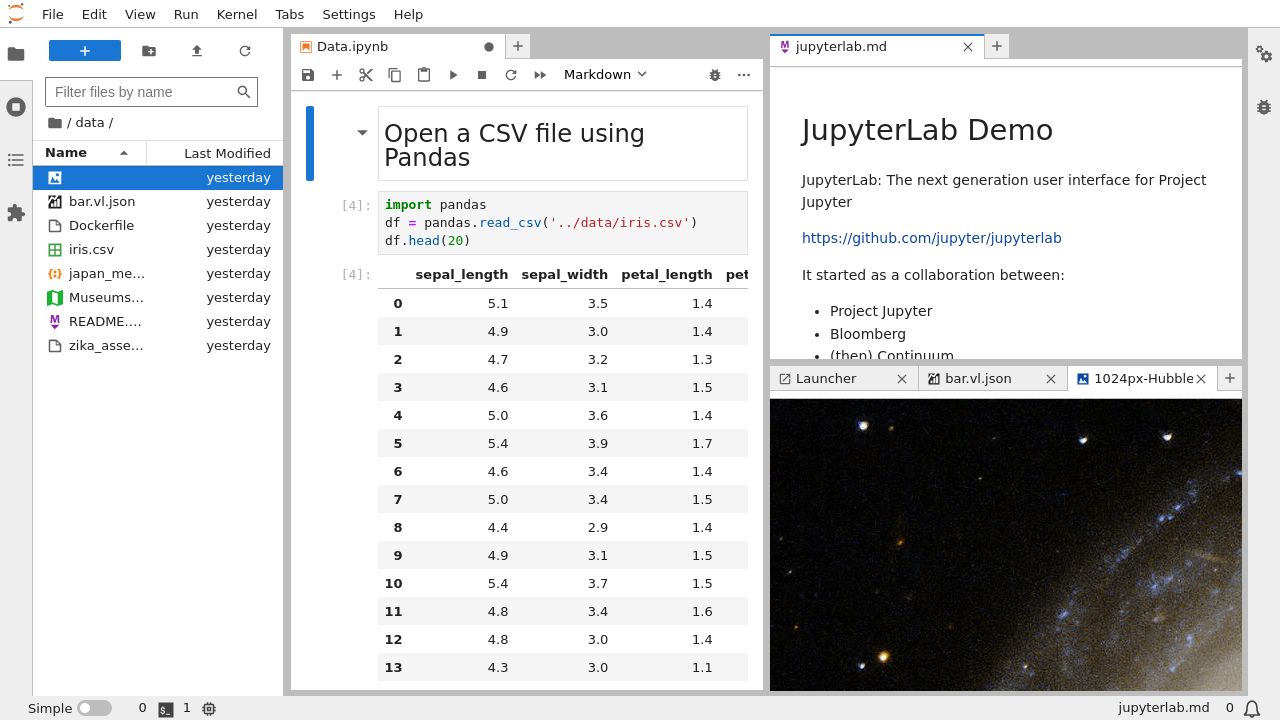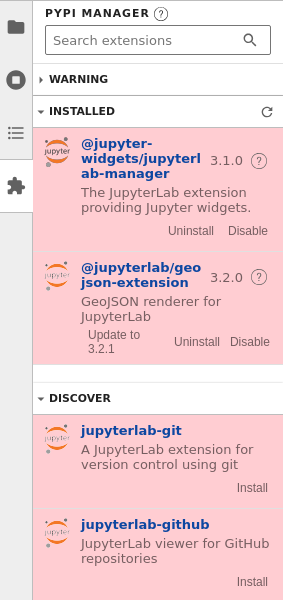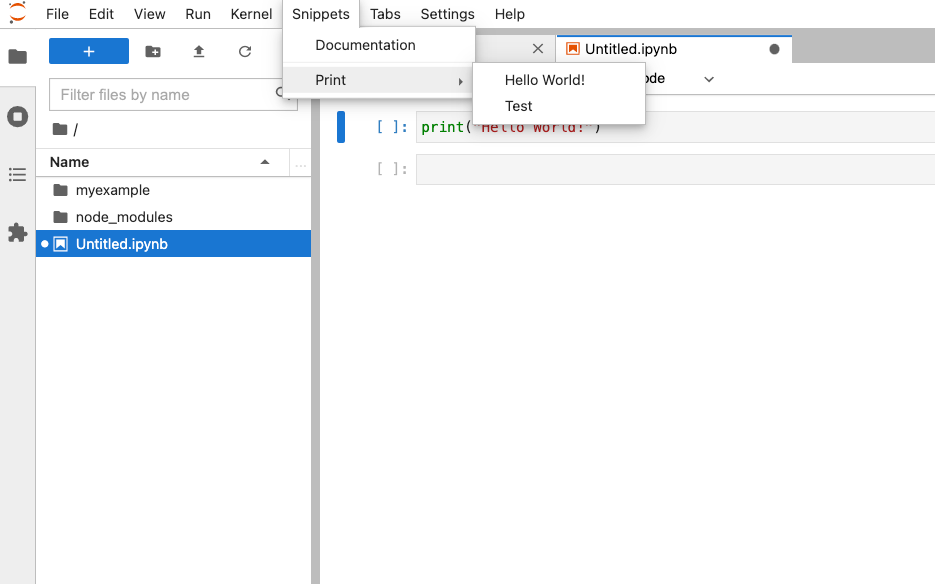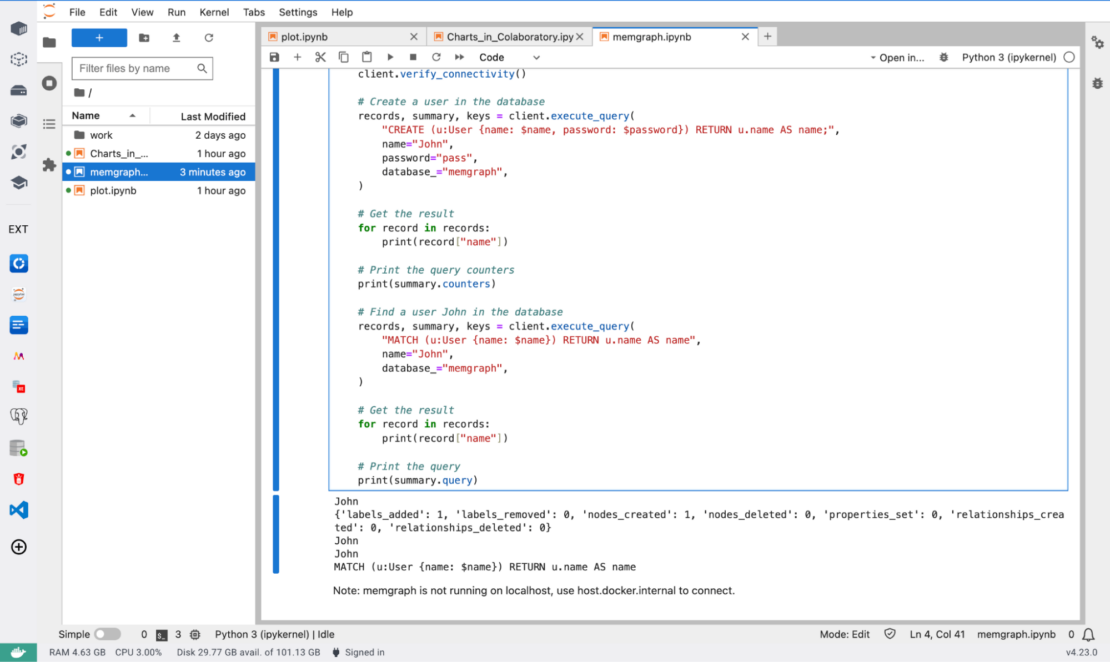JupyterLab extensions exist because the default interface sucks for most real workflows. You're constantly clicking through menus, copy-pasting code between notebooks, and switching between 5 different browser tabs. Extensions fix the specific bullshit that makes your job harder every single day.

Extension Development is Less of a Shitshow Now (JupyterLab 4.4.7)
JupyterLab 4.4 fixed the Node.js compilation nightmare that made extension development torture in 2.x and 3.x. The prebuilt extension system means you can package with standard Python tools instead of wrestling with webpack for 3 hours.
The old way sucked: Every extension install meant recompiling the entire JupyterLab frontend. Users would run jupyter lab build and go make coffee while webpack ate their RAM and crashed.
JupyterLab 4.x uses webpack federation to load extensions as precompiled bundles. No more 10-minute builds that fail with cryptic TypeScript errors.

Extensions People Actually Install
Database Query Extensions: jupyterlab-sql stops you from copying SQL between pgAdmin and notebooks. Database connections break constantly though - expect to debug authentication errors for hours.
Git Integration: jupyterlab-git because nobody wants to diff notebook JSON by hand. Still crashes when handling large notebooks or binary files.

Variable Inspector: jupyterlab-variableinspector shows what variables exist without print statements everywhere. Breaks in Python 3.11+ because of inspect module changes.
Code Formatters: jupyterlab-code-formatter runs black/prettier automatically. Works great until it reformats your notebook and git shows 500 changed lines.
The Development Reality Check
TypeScript Will Ruin Your Week: Python developers think they can skip TypeScript. Wrong. Even a simple button needs interface definitions, async/await, and the Lumino widget system. Plan on like 3 weeks of TypeScript pain if you're Python-only, maybe more if you're stubborn.
Frontend/Backend is Always a Nightmare: Extensions need Python server logic AND TypeScript frontend. The server extension API uses Tornado while frontend state management follows React patterns. Getting these to talk means debugging CORS errors, WebSocket timeouts, and authentication failures.
Extensions Break Every Update: JupyterLab 4.3
4.4 broke half the ecosystem. Your extension works perfectly until users upgrade and suddenly nothing loads. Check GitHub issues to see which versions are completely fucked.

What Actually Works (When It Works)
OK, enough bitching about the problems. Here's the technical architecture you need to understand to build something that doesn't immediately break.
Plugin Architecture: Extensions are collections of plugins that implement interfaces. Sounds fancy but just means your button, menu item, and keyboard shortcut can all talk to each other without completely breaking.
State Management: Lumino signals handle events between components. React devs will hate this - it's not React, it's not Vue, it's JupyterLab's own special kind of desktop-style signal/slot patterns. Simple extensions can skip this complexity if you're smart.
Server-Side Processing: Put heavy work in server extensions, not JavaScript. Server extensions access databases and APIs while frontend handles clicking buttons. Mixing these up creates performance hell.
Why Extensions Fail
You Built a Framework Instead of a Tool: 5000-line "dashboard frameworks" sit unused while a 50-line "Clear All Outputs" button gets installed by everyone. Build the simple thing that works.
You Built What You Wanted, Not What People Need: Extension graveyards are full of clever solutions to problems nobody has. Check your team's Slack complaints before writing code.
Your Documentation Sucks: "Here's the API" isn't documentation. Show copy-pasteable examples or people won't use it.
When to Build an Extension vs When Not To
Build extensions for:
- Connecting JupyterLab to internal APIs/databases that you access constantly
- Automating the same 5-click sequence you do 20 times a day
- Adding missing functionality that makes you switch browser tabs
Don't build extensions for:
- Anything you can fix with a config file
- Python code that belongs in a notebook cell
- Complex web apps that should be separate services
How to Tell if Your Extension is Worth It
Good extensions get used daily without support requests. If people need to ask how to use it, you built it wrong. If it breaks every JupyterLab update, you probably shouldn't maintain it.
The JupyterLab community has helpful people, but extension development is still mostly trial and error. Plan for version compatibility nightmares and users who can't figure out basic installation.
The Reality Check: Current State of Extension Development (2025)
JupyterLab 4.4.7 significantly improved the extension development experience compared to the early 3.x nightmare. The prebuilt extension system with webpack federation actually works now. Memory issues during builds are mostly solved if you configure NODE_OPTIONS properly.
But let's be fucking honest: You're still debugging TypeScript interfaces at 2AM, webpack still occasionally eats your RAM, and each new JupyterLab release has a 30% chance of breaking your extension. The tooling works, but it's not friendly.
The payoff is worth it when you get it right. Well-built extensions that solve real workflow problems get adopted quickly and stick around. Half the features people use daily in JupyterLab started as extensions. If you're going to build one, make it count.




